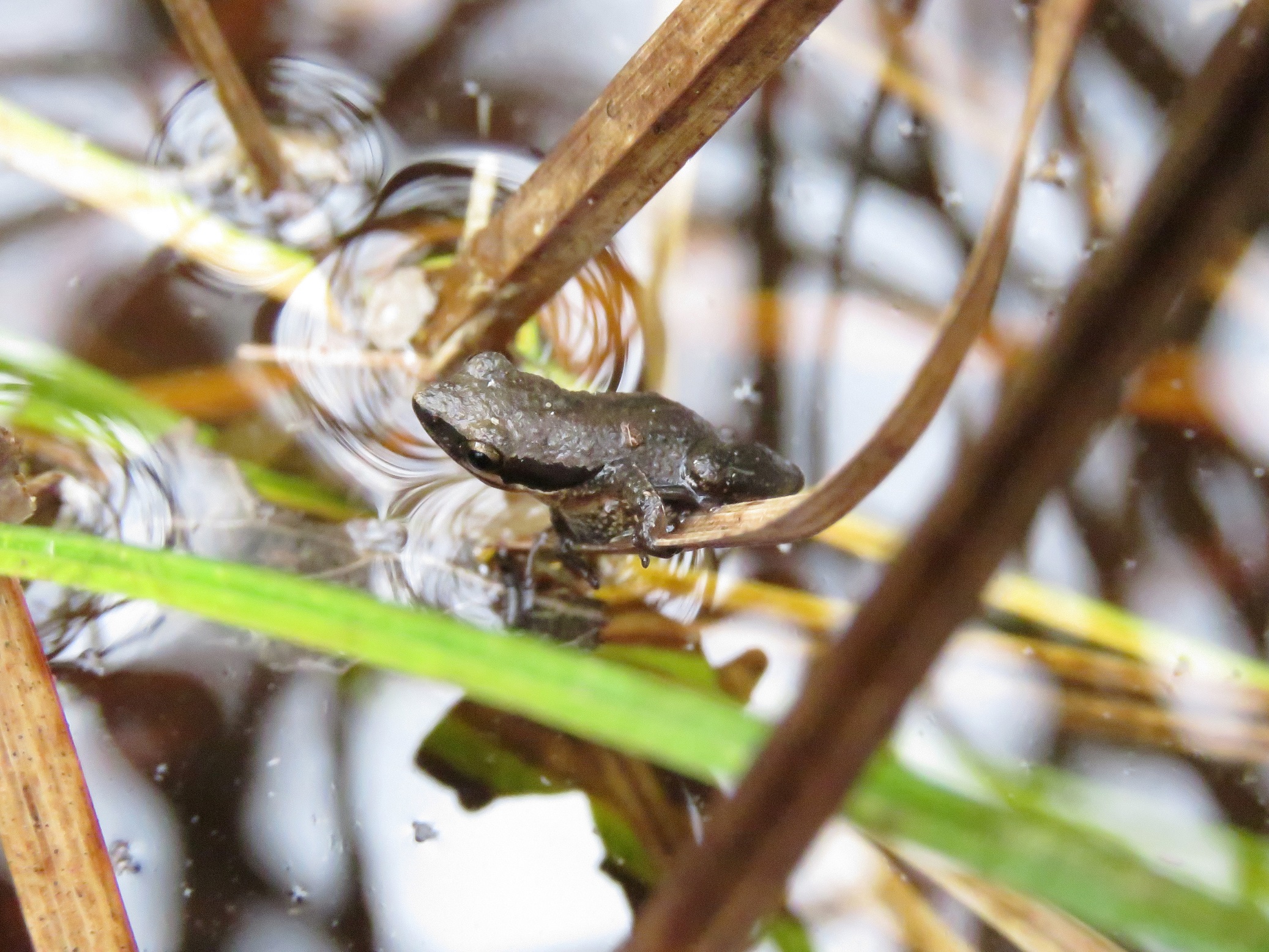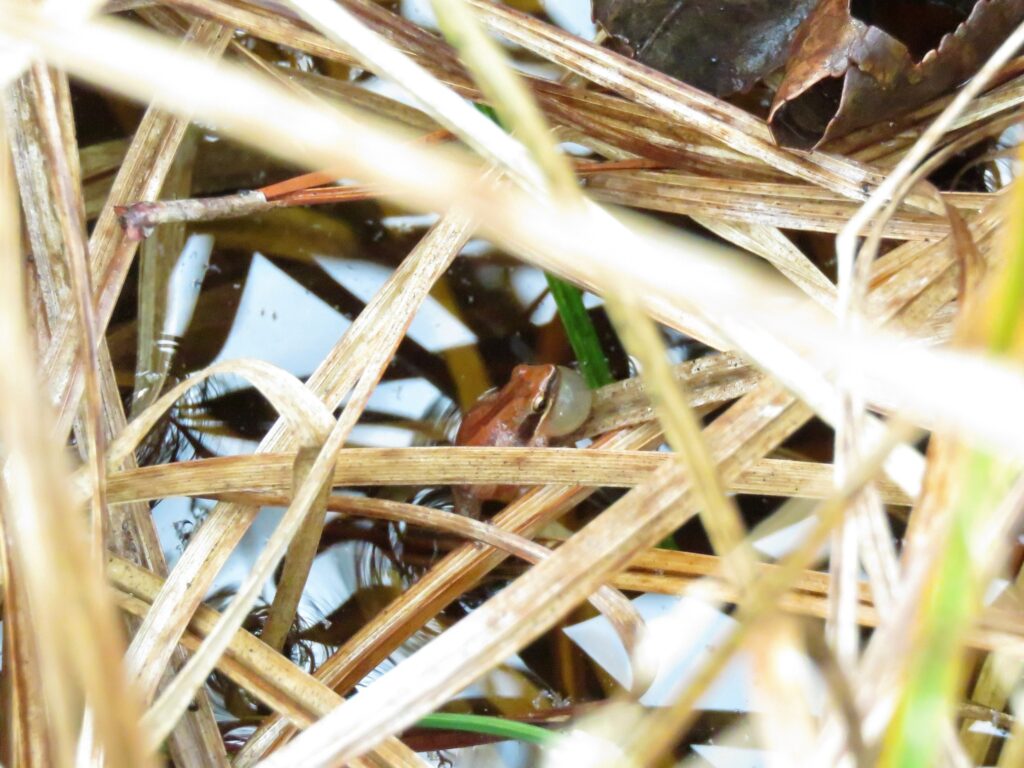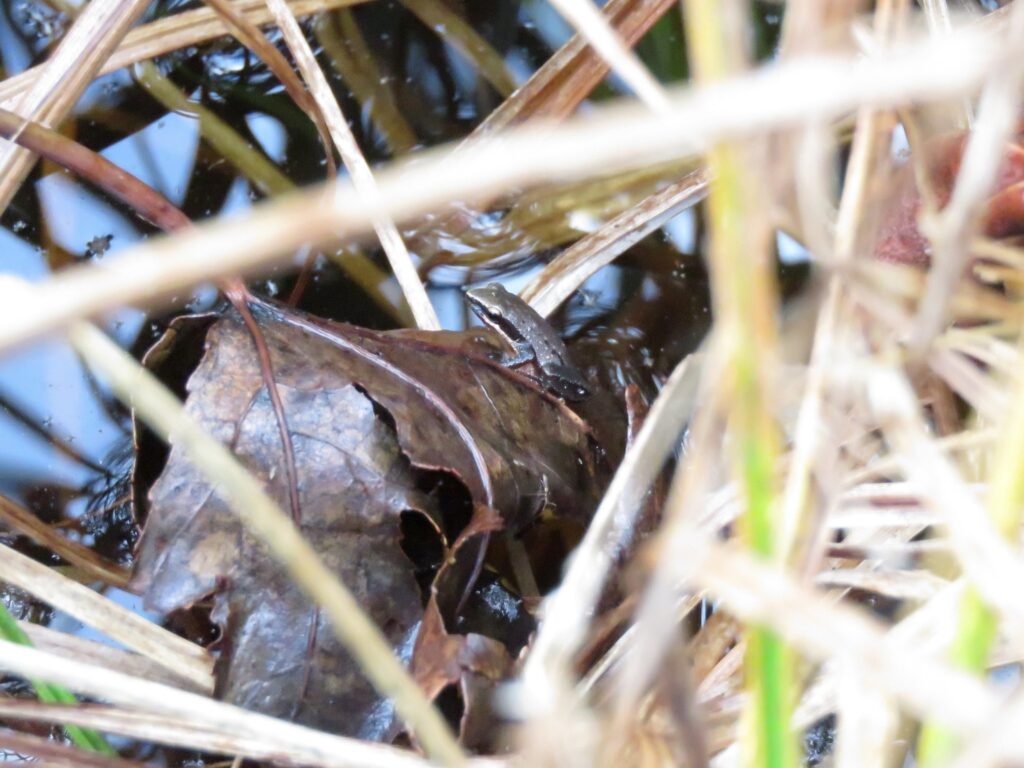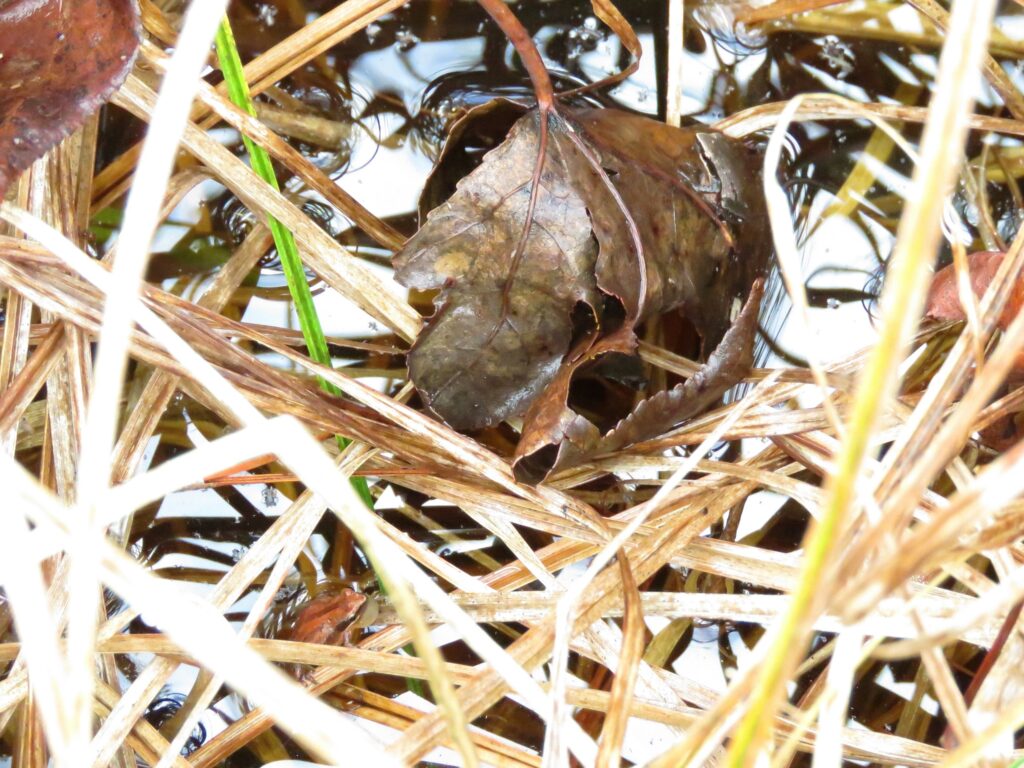



This week for Flora and Fauna Friday we’re taking a gander at our most miniscule member of the amphibians, the Little Grass Frog (Pseudacris ocularis).
A resident of the coastal plain of South Carolina, the Little Grass Frog is a widespread but hard to see member of the Chorus Frogs. They can be found in grassy ephemeral wetlands, especially those bordering forests, all throughout the Lowcountry. However what makes them hard to see is not their rarity, it’s their size. The Little Grass Frog is the smallest terrestrial vertebrate in the United States. A full grown frog is about the size of your fingernail! They’re also cryptically colored to boot, which makes them even harder to spot. The frogs are usually a bronze-brown or copper-orange color with a dark ebony-brown stripe running through and beyond the eye and occasionally some dark stripes down their back. This blends them in well with the grassy environments they prefer. The only good way to locate these frogs is by the male’s song. Male Little Grass Frogs will sing to court a mate. Like most frogs, they possess an expandable throat pouch which increases the volume and resonance of the call. For the Little Grass Frog, that call is a high pitched, glassy chirp which sounds much like the calls of many of our katydids and crickets. Little Grass Frogs will sing and breed throughout the year but I find them easiest to locate in mid to late winter after a good warm rain. They are one of our earliest frogs to stir each year, right alongside our Spring Peepers. Like many of our amphibian species, Little Grass Frogs depend on ephemeral wetlands to survive. Due to their itty bitty size, they’re a target for almost every species of fish and their eggs and tadpoles have little chance to survive in a fish-filled wetland. So they utilize ephemeral wetlands, which dry out every year, as their breeding pools. These wetlands typically fill up in winter while the vegetation is dormant and dry out in summer once the growing season is in full swing. Their shallow, predator-free waters make the perfect nursery for many frog species, including the Little Grass Frog.